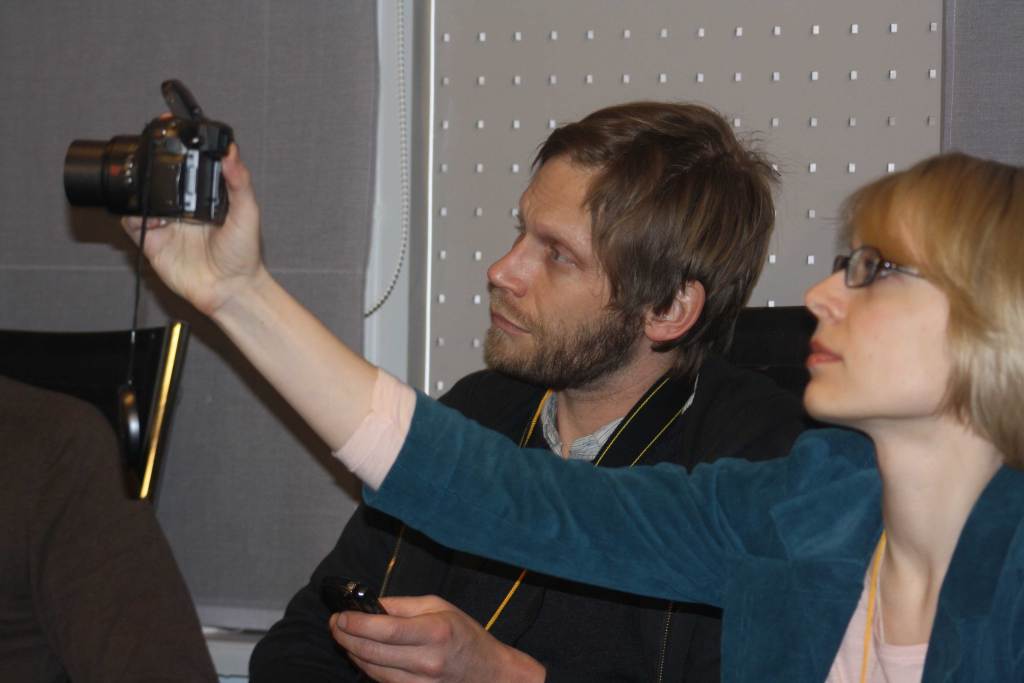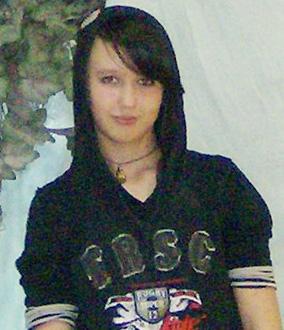| Multiplatform authoring |
| — | |||
| By | |||
|
The first module in this online journalism series dealt with the basics of how to create news content for the web. The second dealt with how to manage that content online. This third module shows how an editorial discipline, applied to the way news content is created, can enable a news operation to deliver that content to multiple outlets without further human intervention. Shortly, you will be taken through what is required from the journalists so that they can create content once for multiple outlets. But, before that, the reasoning behind the system. This introduction might make more sense to senior editors and business managers, but it is important that those who create the stories understand the thinking too. Multiplatform authoring has benefits for both the users and the creators of news. The user will be able to receive the same news wherever they are and on whatever device they choose to turn to. The news organisation benefits by saving on resources, ending duplication and reversioning, creating new products, and strengthening the news brand. Multiplatform authoring also has benefits for both users and news creators by ensuring that the same content will be delivered to whatever platforms appear in the future. This tutorial takes you through the thinking and methodology behind the system. By the end of this course, you will understand the basic skills needed for multiplatform authoring, and, hopefully, will understand why it also makes sense in business terms. Even if your news operation has yet to move to a multiplatform authoring model, the lessons below will help you create content better. Convergence and divergenceMany newsrooms face the dilemma of how to respond to convergence (see ) and divergence. There is the convergence of computers, broadcasting, and telecommunications, and there is divergence, with new digital platforms appearing on a regular basis. Such developments have an impact on news production, editorial resources, and a media company’s presence alongside its competitors. Not many news organisations can afford to keep inventing new production methods to deliver to the new platforms. They certainly cannot afford to keep hiring more journalists to reversion their content for those platforms. Moreover, they cannot afford to let competitors dominate the new platforms. They have to find a system for creating news content once so that it can be delivered to all text-based platforms without further reversioning or complex technical procedures. We are talking here about the core news content, not indepth features or complex analysis, but the daily news delivery. Back to basicsThe simple solution for creating news content for the digital age stems from some of the basic principles of journalism. Even the most sophisticated technical solution will struggle to make bad content look good. The journalists producing text for digital platforms need to think of their content as part of the technical solution and not separated from the technical solution. This determines how they create that content. The words they write need to be transformed by technology so that they appear clearly online and on any device. In order to prepare content that works this way the journalists need to work to some strict editorial disciplines. They need to create short, sharp sentences. The headlines need to make sense standing alone. The story summary needs to make sense on its own, or presented alongside the headline. The two should not compete and neither should they repeat. News stories need to be written in a pyramid journalism style, so that it makes sense wherever it is cut, or whenever the reader chooses to move on. The stories need to be fact-rich and low on padding. They need to deliver the age-old journalistic basics of who, what, why, when, where, and how. This doesn’t trivialise the journalist’s craft, rather it introduces important editorial disciplines so that the content that is created can be accessed by more people on more devices. The challenge is to find a writing style that delivers content, created once, to multiple outlets. The great Liverpool Football Club manager, Bill Shankly, had a simple philosophy for how his team should play. He used to tell his players to “let the ball do the work.” Instead of running round in circles wearing themselves out, he taught them to hold a position, pass the ball, let the ball do the main work, then move into a fresh position, collect the ball, and repeat the process. In a way, creating content for the digital age is similar. Journalists need to let the tools do the work. Journalists should only have to worry about finding and presenting facts in sentences. The technical tools do the rest. However, the way the journalists present those facts is crucial. Technical tools exist to allow news managers to set up newsroom workflows so that the content created by their journalists, once it is committed to a database, can be distributed without further effort, to all text-based digital platforms. The tools can also enforce editorial disciplines, such as the length of a headline, sentence, and paragraph. The beauty of this system is that it will enable the news organisation to push its content on new and varied platforms, and it will assist it in saving resources and help towards reaching sustainability. The content challengeThe challenge for all news organisations is to deliver content to all digital platforms efficiently, effectively and elegantly, in a financially sustainable way that builds on the value of the core news content. To help decide whether a multiplatform authoring strategy is right for your news organisation, you need to do two things. You need to assess if there is a market or brand benefit for being seen on the other platforms. You also need to test this proposition: «Is there is a core set of text data that can form the basis of most, if not all of our news services?» If there is a market, and if there is a core set of text data, you have made the first step in forming your multiplatform strategy. If you feel there isn’t a market, you probably need to spend time finding out more about how your users access their news, what the other news operations are doing, and the availability of digital gadgets in your area. If you feel there isn’t a core set of text data that can form the basis of most, of not all of your news services, you will need to take a fresh look at your workflows, output opportunities, editorial content, staffing levels, and use of resources and ask the question again. Once you have done that you will probably find the answer changes and there is a core set of text data that can form the basis of most, if not all, of your news services. The issue will then be whether you have newsroom changes needed to realise this strategy. The formula is simple, as set out above. To recap it involves:
Remember, this method is ideal for the delivery of core news to multiple outlets, there are other solutions for the treatment of features and longer context and analysis pieces. Risks and benefitsOf course there will be risks and benefits associated with any change, particularly one which affects the process of news production. Some of the risks could be that:
Some of the benefits could be:
In the past, data has been prepared medium-specific. The multi-platform future makes that unsustainable. Your news organisation might need to exploit that new situation to strength the brand, reallocate resources and respond to fresh opportunities. How it is doneThis boils down to a number of areas, and is best approached if we look at a story in its component parts, such as the length of the headlines, the length of sentences, the length of summaries and the length of stories themselves. These lengths are defined in character counts, which means the number of letters and spaces used. A news operation needs to look at all its products currently going out on Web, WAP, TV Text, SMS, digital text, and other outlets. A common length that works on all platforms needs to be agreed. Stories are then created to that character-limited formula and tested on all platforms. The least flexible of all platforms is often TV Text. The TV text screen is 40 characters across and 20 lines deep. This would allow for 800 characters in all. However, there has to be space for page numbers, quick links, perhaps adverts, and blank lines to break up the text. When all this is taken into account, the journalist is often left with just 550 characters with which to set out the main points of the news item. The best formula for delivering content to the TV text platform is to keep the headline 35 characters long, the first paragraph at 120 characters, and the second paragraph 200, the third at about 250 characters. This gives a total of 605 characters, an ideal length for a TV text page, and a WAP page. You can continue to write the story, carrying on as long as you want, but the top part of the content pyramid will be written to these specific character counts and will be extracted and delivered to TV text. Also, by working to this character-limited formula, you will have already created four news products from the one. The headline and the summary will fit the 160-character limitation needed for SMS, the same text you have delivered for TV text will work on WAP, short summaries online, and interactive TV. There are other platforms it will work on, but that is enough to illustrate the point that a journalist, creating content to character-limited fields, can reduce the need for reversioning and duplication and offer the chance to deliver the news to other platforms. Your technical team will be able to build those character limitations into fields in the content management system, or newsroom production system where you create stories. However, you don’t need to wait for them to do this. You can start writing stories in this way before the technological solutions are created. That way, you are prepared and already working to the new multiplatform model. Writing disciplinesThis has been covered in earlier modules, but it is worth going over it again. To enable you to create content for multiplatform use you need to:
As stated before, the headline should be 35 characters. 35 fits TV text best. The summary should be 120 characters and this, and the headline, can be automated to appear as the tease to your story on the main page of the site or the section index. Your technical team might create a template with character-limited fields to make the job easier. There might also be a number of preview buttons, so that you can see what the content will look like on SMS, WAP, TV text and other platforms. This graphic shows how a story, written in character-limited fields in a content management system, can then be delivered to and extracted from a database for use on multiple platforms.  Notice that the component parts on the right are later added together to create news products. Your writing must fit this pattern to enable multiplatform authoring. Next module:
|
|||


 С Новым Годом, дорогие коллеги!
С Новым Годом, дорогие коллеги! Глава Google предупреждает о последствиях "открытости" данных для пользователей
Глава Google предупреждает о последствиях "открытости" данных для пользователей Сайт «Эхо Москвы» — настоящее и будущее
Сайт «Эхо Москвы» — настоящее и будущее Washington Post экспериментирует
Washington Post экспериментирует Владимир Касютин: Вставная челюсть из виджетов и гаджетов
Владимир Касютин: Вставная челюсть из виджетов и гаджетов Юлия Щукина: В Интернет! Страху вопреки...
Юлия Щукина: В Интернет! Страху вопреки...

 Сессия топ-менеджеров АНРИ в лицах: Человек с фотоаппаратом
Сессия топ-менеджеров АНРИ в лицах: Человек с фотоаппаратом Сессия топ-менеджеров АНРИ в лицах: Анна Знаменская (генеральный директор Digital Access)
Сессия топ-менеджеров АНРИ в лицах: Анна Знаменская (генеральный директор Digital Access) Twitter-трянсляция выборов в Украине
Twitter-трянсляция выборов в Украине Областная дума за сотрудничество с «Эхо недели»
Областная дума за сотрудничество с «Эхо недели» "Эхо недели": В Железногорске пропала 15-летняя девушка
"Эхо недели": В Железногорске пропала 15-летняя девушка "Эхо недели": Железногорский суд не восстановил в должности бывшего директора школы №9
"Эхо недели": Железногорский суд не восстановил в должности бывшего директора школы №9 "Эхо недели": В Железногорске иномарка сбила ребенка
"Эхо недели": В Железногорске иномарка сбила ребенка Как сайтам CМИ получить больше трафика?
Как сайтам CМИ получить больше трафика? IJNet: Нужно ли публиковать анонимные комментарии читателей?
IJNet: Нужно ли публиковать анонимные комментарии читателей? Юрий Соломонов: Не блог есть что...
Юрий Соломонов: Не блог есть что... ← Подпишись на RSS!
← Что такое RSS?
← Подпишись на RSS!
← Что такое RSS?
 ← E-mail рассылка
← E-mail рассылка
Комментарии